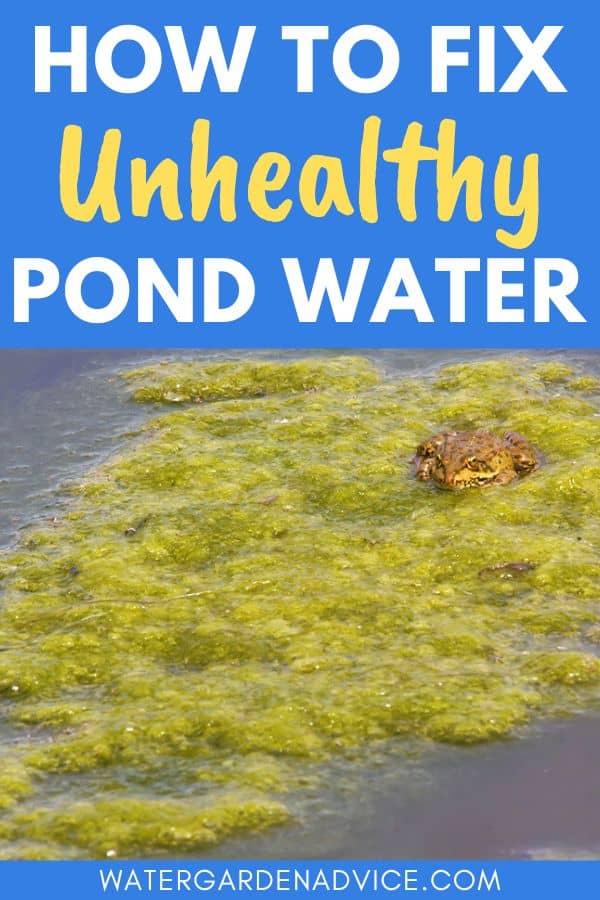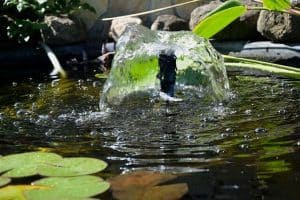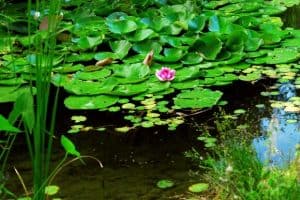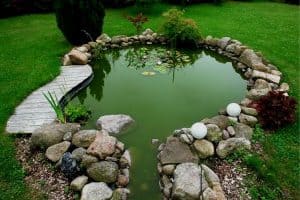If you have a pond in your yard, it’s important to keep an eye on its health.
An unhealthy pond can lead to all sorts of problems, from algae blooms to fish kills.
In this article I’ll discuss 7 signs that your pond is unhealthy and how to restore your pond’s ecosystem.
This post contains affiliate links. Please read the disclosure for more info.
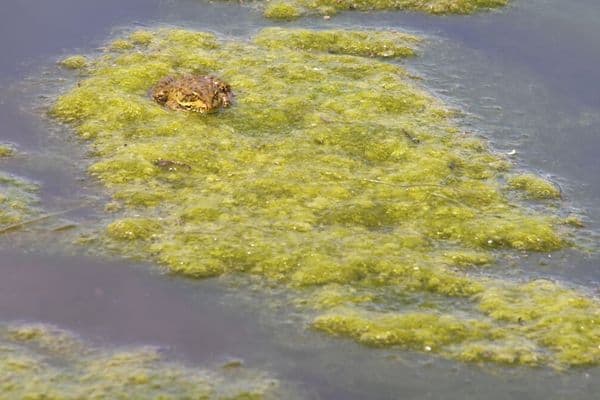
7 SIGNS OF AN UNHEALTHY POND
1. A foul odor
One of the most obvious signs of an unhealthy pond is a bad smell.
If your backyard pond smells like rotten eggs or your fish are gasping for air at the surface of the pond, it’s a sign that the pond water is low in dissolved oxygen.
You can improve the oxygen level in your pond water by installing a fountain, waterfall or bubbler.
Aeration keeps the water well-oxygenated, which is essential for the health your fish.
Aeration also helps to stop mosquitoes breeding in the pond water and increases the beneficial aerobic bacteria that help to break down waste materials in the pond.
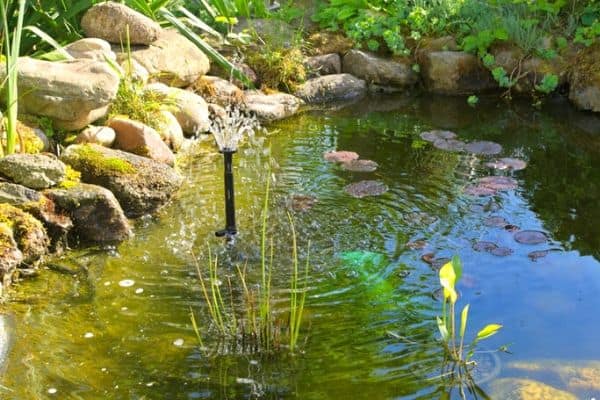
2. Water that is murky or cloudy
Murky water is often a sign of excess algae growth.
Algae blooms can be caused by high levels of nitrate and phosphate from rotting plant materials and fish droppings.
An overgrowth of algae can prevent sunlight reaching the bottom of the pond, which can cause problems for aquatic plants and fish.
If your pond water is murky, you should test it for ammonia, nitrites, and nitrates.
3. Scum or foam on top of the water
Scum or foam on the surface of your pond water is usually caused by a build up of protein in the pond from organic matter that is decaying at the bottom of the pond.
It’s a good idea to regularly remove leaves, twigs, flowers and other debris that falls into the pond to reduce scum and muck building up in the pond.
If you notice scum or foam on your pond, you can scoop if out using a long handled net or install a filtration system to help keep the water clean.
I’ve also found muck reducer tablets to be helpful for cleaning up scum and muck in the water.
4. Lack of wildlife
Healthy ponds attract a diverse range of wildlife including birds, reptiles, and small mammals.
If you notice a lack of wildlife around your pond, it could be a sign that the water is polluted.
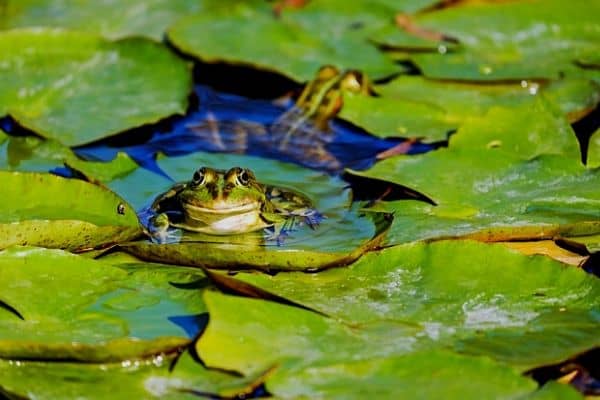
5. Dead fish
One of the most obvious signs of an unhealthy pond is dead fish.
Dead fish can be caused by a number of factors including disease, pollution, and lack of oxygen. [1]
If you notice dead fish in your pond, it’s important to remove them as soon as possible.
Otherwise, they will decompose and release toxins into the water.
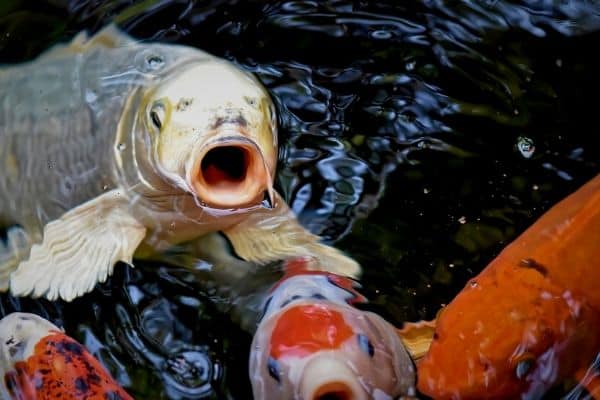
6. Lack of plant life
If plants can’t survive in the pond environment, it’s a sure sign that something is wrong.
Plants are an essential part of the pond ecosystem and provide food and shelter for fish and other aquatic creatures.
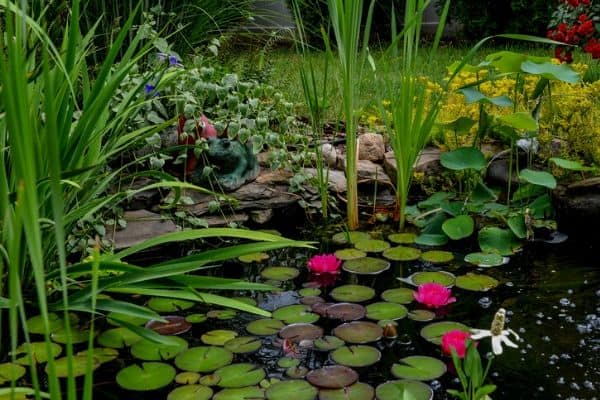
7. Poor water clarity
It’s nearly impossible to get pond water completely clear, but if your pond is consistently murky or cloudy, it ‘s a sign that something is wrong.
There are a number of possible causes of poor water clarity including excess algae and sediment build up.
If you notice any of these signs, it’s important to take action to improve the health of your pond.
HOW TO FIX UNHEALTHY POND WATER
Water testing
Pond water testing is the best way to monitor your pond’s health.
You can purchase pond water testing kits online, and it’s a good idea to test your pond water at least once a month for pH, ammonia, nitrites, and nitrates.
The ideal pH level for a backyard pond is between 6.5 and 9.
Install a pond filtration system
Pond filters help to remove debris, excess nutrients, and harmful bacteria from the water.
Clean up debris
Leaves, twigs, and other organic matter can pollute your pond and lead to problems like algae blooms.
Use a long handled net to scoop out the fallen leaves and debris or install a pond skimmer if you don’t have time to do it regularly.
Add plants
Plants are essential for the health of your pond. They help to improve water quality by competing with algae for nutrients and they provide food and shelter for fish and other wildlife.
Pond plants can also absorb nitrates and ammonia from the water as well as release oxygen into the water.
Try planting a mix of submerged, floating and marginal plants, but ensure that floating plants cover no more than 50% of the pond surface.
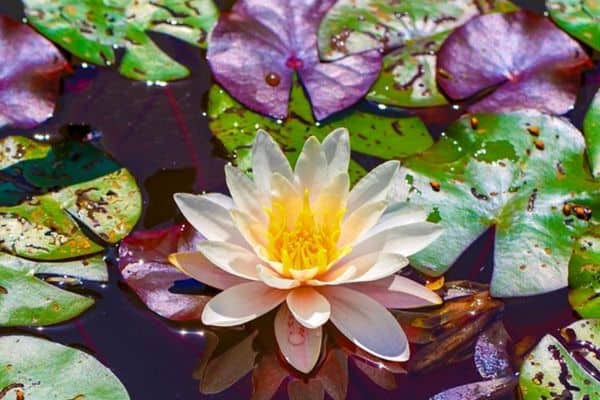
Maintain a healthy fish population
Avoid overstocking your pond, as this can lead to water quality problems.
If you have too many fish in your pond, de-stocking your pond will help to reduce algal blooms and give your fish more space to swim around.
RELATED ARTICLES
- How to Keep Pond Water Cool in Summer
- How to Reduce Pond Water Evaporation
- How To Fix Green Pond Water
- How To Make Your Pond Water Clear Blue
By taking these steps, you can help to ensure that your pond remains healthy and productive.
What methods have you tried to get your pond water healthy? Let me know in the comments below.
Are you on Pinterest? I have boards dedicated to Garden Ponds and Pond Maintenance that you may find interesting.
